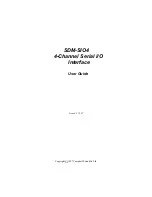
4
2
1
3
Page
2
- Manual
FB01264 -EN
- 12/2018 - © C
AME S.p.A. - The cont
ents of this manual may be changed, at any time, and without notice. - T
ranslation of the original instructions
Description of parts
Front view
1
Signaling LED
2
Speaker
3
Touch-screen display
4
Microphone.
Rear view
5
Socket for connecting the device to the LAN PoE
network.
Green LED, activity on the network:
permanently lit = active link,
flashing = data activity.
Yellow LED, data transmission speed:
off 10Mbps,
on 100Mbps.
DESCRIPTION
Full-touch speaker video intercom for IP360 system, 7˝ TFT touch screen display, Wi-Fi and Graphical User In-
terface.
GENERAL PRECAUTIONS
•
Read the instructions carefully before beginning the installation and carry out the actions as specified by the
manufacturer.
•
The installation, programming, commissioning and maintenance of the product must only be carried out by
qualified technicians, properly trained in compliance with the regulations in force, including health and safety
measures and the disposal of packaging.
•
Before carrying out any cleaning or maintenance operation, disconnect the device from the power supply.
•
Use this equipment solely for the its specifically intended purpose.
•
The manufacturer declines all liability for any damage as a result of improper, incorrect or unreasonable use.
Cautionary issues on remotely controlling the device
Some features of the system may be managed by smartphones and tablet PCs, by using the corresponding apps.
For the system to be remotely controlled, the device must be connected to a home WiFi network with internet
access.
This type of system functions properly when:
- the device receives a high-quality WiFi signal
- there is a permanent connection established by your contract with the internet service provider. The connection
must support the data flow generated by the device and support VoIP,
- the smartphone or table PC on which the corresponding app is running does not block any VoIP apps.
remotely controlling the device via app means that the data traffic consumption takes place over the
home network of the smartphone or table PC; the ensuing cost of said consumption is borne by the user.



































